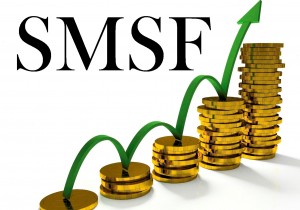Maxmillian SMSF Tax Accountants and Advisers can help you Setup a SMSF in Sydney. As specialists they can advise you on the most appropriate SMSF setup and whether a SMSF is right for you.We also specialise in helping you buy property with super or SMSF property investing.
Click here to make an enquiry about Self Managed Superannuation Funds (SMSF).
If you are looking for a tax effective investment structure then self managed super could be the answer.
According to recent figures from the ATO there are over 500,000 SMSFs in Australia with over $400bn in assets (as of April 2012). SMSFs are forecast to grow at a rate of 90 new SMSFs each day and 30,000 new SMSFs a year.
How does an SMSF work?
Self-managed super funds follow a similar set of rules as regular super funds. Understanding how the Australian super system works will help understanding how SMSFs work. The Australian superannuation system is setup to help Australians invest and save for retirement. As with any investment ultimate responsibility rests with the individual. The incentive to invest and save within super is the comparatively generous tax rate of 15%.
Do you need an SMSF?
Where people have become frustrated with the current system is not so much with super itself – but more so how it has been applied by the big financial institutions that now dominate the superannuation industry. Few members feel like they have any say in how their funds are invested and it’s often heard that “if I could invest the money myself, I’d do a much better job at it”.
This has lead to Self Managed Super Funds – or SMSFs becoming more and more popular. With an SMSF, the members are the trustees and the trustees are directly responsible for the investments of the fund. Due to this direct relationship between the members and their money, it’s more likely that members of an SMSF are likely to invest into more direct assets such as property and shares rather than set and forget managed funds.
Ask about setting up a Super Fund here.
Taking control of your super
There are a few key reasons why you would consider setting up your own Self Managed Superannuation Fund. While not a comprehensive list, hopefully it will get you thinking in the right direction.
Firstly you may have a large fund balance in your superannuation, especially if you include your partner’s super balance. Because of the nature of SMSFs, often they main fees such as accounting, audit and administration are flat fee. This means as the balance grows the percentage you’re paying in fees is constantly falling – often dropping to below what you would be paying in either a retail or even an industry fund.
Second is if the running costs of an SMSF is similar in total fees to what you’re paying at the moment, and you would prefer to have more control over your superannuation assets. Even if you’re paying more fees in an SMSF, you may want to consider one if you’re considering investing into a type of asset or a style of investing that is not actually available with a retail or industry superannuation fund. This may include things such as borrowing money to invest, buying property or other non-listed assets such as gems and wine.
Finally you may have little faith in the way that current superannuation funds are run and don’t feel that anyone else can manage your money as well as you can. In this case, you could be unlikely to ever want to put any money at all, yet alone any additional money into superannuation –impacting your final retirement balance. By having complete control over all the funds in your SMSF, this may provide some comfort with using superannuation as a tool to create wealth.
What else do you need to know about setting up an SMSF?
Options on Trustees
Every superannuation fund has to have a trustee, and Self Managed Superannuation Funds are no different. You can either be the trustee yourself, or you can elect to have a company which you own and are a director of act as the trustee. There are pros and cons of each, and it depends on your personal situation. We suggest that you seek the advice of a financial planner or accountant to work this one out.
Rules for Borrowing Money inside your SMSF to Buy Property
Superannuation funds can borrow money to buy direct property using a specified method for allowing borrowings inside a SMSF known as limited recourse borrowing. The SIS Act governs how this can work, so we recommend you refer either to an accountant or a professional adviser to ascertain if you are eligible to borrow money with your super or not.
SMSF Setup Costs
In order to set up a SMSF, you’ll need a trustee and a trust deed. Cost will also depend on if you or a company is going to go as the trustee. If you have a company as a trustee, you’ll need to pay ASIC lodgement fees in order to register it. The cost of a SMSF trust and advice could range up to about $4,400 depending in the level of service you need . You generally get what you pay for, however be careful you don’t pay too much. You’ll find generally, most professionals will charge between $990 and $2,000 for the trust deed and related services.
What are the Ongoing Costs of running an SMSF?
Typically, you get what you pay for, up to a point. You’ll find people charging the higher amounts of money may be due to them providing more services and processes to generate the annual returns on a SMSF as other firms, and will therefore not be able to deliver the same value. You shouldn’t be paying any more than $5,500 a year and paying as little as $2,000-$2,500 per year will usually see you get something pretty good.
These are the basics to get you started, seek the services of a professional financial accountant or adviser who can help you find out if an SMSF is right for you.
Get advice about your superannuation fund book a free consultation here.
Disclaimer: The information in this article is for general purposes only and not financial advice. Visitors should seek obtain independent advice before making any financial decision.
Expert advice on self managed superannuation funds (SMSF’s).


